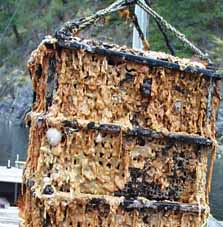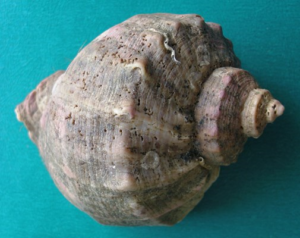The code of practice applies to marine aquaculture owners/operators (for example, fish farmers, shellfish growers and seaweed aquaculture). The code provides advice and guidance on the appropriate methodologies to prevent the spread of invasive non-native species in the aquatic environment. The code also takes into account the use of boats and equipment by the sector and recommends guidelines to that facilitates managing this vector of spread.
Adherence to the guidelines in this code of practice will help limit the spread of some of Ireland’s Most Unwanted invasive species.
 |
Threat: Impact on aquaculture and fisheries, protected species and marine ecosystem functioning
Status: Established invasive species
Photo credit: USGS
Find out more
|
 |
Threat: Fisheries, protected species and marine ecosystem functioning
Status: Established invasive species
Photo credit: GB NNSS |
 |
Rapana venosa
Common name: Asian rapa whelk Threat: Threatens marine ecosystem functioning Status: Potential invasive species Photo credit: Argyo Zenetos |
The ability of species to contaminate aquaculture equipment and stock species, foul the hull of boats and stow away in bilge water has and can continue to deliver non native species to new areas where they can impact on the biodiversity and economy of the region.
The aquaculture sector has a role to play in preventing movement of invasive non-native species by preventing the contamination of transported equipment and product, reducing fouling of vessels and equipment by use of an appropriate antifouling method (e.g. antifouling paint), removing fouling in a responsible manner where it cannot return to the environment, draining all water from the vessel/craft before transferring to another water body, preventing fouling of ropes and chains by drying them on a regular basis and not disposing of live material in the water.
The impact invasive species exert on native species, endangered species and on the conservation goals of designated areas are costly to control and mitigate against. Good practice has the potential to deliver significant benefits in terms of preventing introduction and spread of non-native species, where these are likely to cause problems.
A summary of the recommended actions in the Aquaculture Code of Practice can be found at the following link:
You can download the Draft Aquaculture Code of Practice parent document from the following link:
Draft Aquaculture Code of Practice.
BIM is the Irish State agency with responsibility for developing the Irish Sea Fishing and Aquaculture industries.
Under the Fisheries Act (Northern Ireland) 1966, Marine & Fisheries Division is responsible for the licensing of fish farms in Northern Ireland. This includes the granting of fish culture licences, shellfish fishery licences and marine fish fishery licences.
ECOPACT is an initiative developed by BIM in cooperation with the Irish Shellfish Association (ISA) and the Irish Salmon Growers Association (ISGA), designed to bring about the widespread adoption of Environmental Management Systems (EMS) into the aquaculture industry.
The Marine Institute are the state agency responsible for marine research, technology development and innovation in Ireland. They provide a range of services to ensure the aquaculture industry operates to international best practice standards and in accordance with national and European legislation.